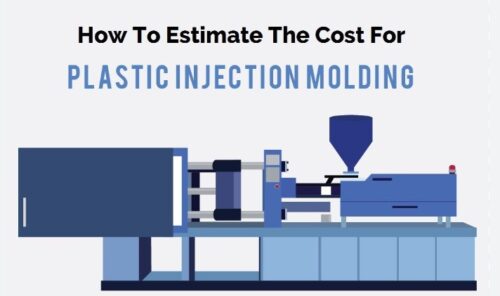Unveiling the Complexity of Cost Estimation in Plastic Injection Molding
Cost estimation is a critical aspect of the plastic injection molding industry, influencing decisions at every stage of product development. Accurately predicting the costs associated with the manufacturing process is essential for effective budgeting, pricing strategies, and overall business success. This blog post will delve into the multifaceted nature of cost estimation in plastic injection molding, exploring the key factors that influence costs and strategies to optimize expenses.
Factors Influencing Costs in Plastic Injection Molding
- Material Selection: The choice of plastic material significantly impacts costs. Various materials come with different price points, affecting production expenses. Factors like material durability, flexibility, and specific application requirements are considered during material selection.
- Part Design and Complexity: Intricate and complex designs often require more extensive mold and tooling, leading to higher production costs. Simpler designs generally cost less to produce.
- Tooling and Mold Development: The creation and maintenance of molds and tools are one of the most significant initial costs in injection molding. Factors such as mold complexity, material, and lifespan influence tooling expenses.
- Production Volume: Economies of scale play a crucial role in cost estimation. Higher production volumes typically lower the per-unit cost, as fixed costs are spread across more units.
- Cycle Time and Machine Efficiency: Optimizing cycle times and machine efficiency can impact costs. Longer cycle times result in higher production costs due to increased energy usage and decreased machine availability.
- Labor Costs: Skilled labor and specialized expertise are required for maintaining machines, quality control, and overseeing the production process, all of which contribute to the overall costs.
- Quality Control Measures: Implementing stringent quality control measures might initially increase costs, but they help avoid defects and reduce rework expenses in the long run.
Strategies for Effective Cost Estimation
- Thorough Design Analysis: Carefully evaluating the part design early in the process can help identify potential cost-saving opportunities. Design for Manufacturability (DFM) principles can streamline production and reduce expenses.
- Material Selection and Optimization: Conducting a comprehensive analysis of material options and their properties can help in selecting cost-effective materials that meet product specifications.
- Tooling and Mold Design Optimization: Investing in high-quality molds that have longer lifespans and lower maintenance requirements can be cost-effective in the long term.
- Streamlining Production Processes: Optimizing machine efficiency, reducing cycle times, and minimizing downtime can lead to significant cost savings.
- Value Engineering: Continuously reviewing the manufacturing process and identifying areas for improvement can result in cost reductions without compromising product quality.
- Supplier and Partner Collaboration: Collaborating with reliable suppliers and partners can result in better cost negotiations and long-term cost savings.
- Lifecycle Cost Analysis: Assessing the entire lifecycle of a product, including production, maintenance, and disposal costs, is crucial for a comprehensive understanding of total expenses.
The Importance of Accurate Cost Estimation
Accurate cost estimation is not just about determining the price of production; it influences various business decisions. It impacts pricing strategies, profit margins, competitiveness in the market, and the ability to adapt to changing market conditions. A precise understanding of costs allows for better financial planning and management, ensuring the sustainability and success of the business.
In conclusion, cost estimation in the plastic injection molding industry is a complex process influenced by a multitude of factors. Businesses must carefully analyze these factors to create accurate cost estimates. Implementing cost-effective strategies, optimizing processes, and embracing innovative technologies and methodologies can lead to cost savings and increased competitiveness in the industry. By understanding and refining cost estimation practices, manufacturers can navigate the challenges and complexities of the plastic injection molding industry more effectively.
